The Surrealist Group of Stockholm
Response to inquiry on Deep Time
It was an excursion, probably a surrealist expedition. I walked alone at the front, with the rest of the group behind me. The main dividing line in Stockholm, the central border, goes along the water, where the sea is the deepest. It’s the border between Östermalm and Västermalm, East and West, and it runs along the water west of the Central Bridge, next to the City Hall at Klara Mälarstrand. There’s a mountain ridge below the water, but it rises above the water so you can walk on it. Most of the mountain is under the water, like an iceberg. Stockholm exists at the bottom of the valleys along both sides of the mountain ridge.
At first there was water, and I walked along the ridge. But when I was going to return to pick up the others and show them, winter had arrived. The mountain ridge and the valleys were covered by snow, ice and mist.
At first you could still see the outlines of the city skyline like crystals and ice under the mist. But when we arrived and walked out on the mountain ridge/ice bridge the city had disappeared. There were only snow- and ice-capped mountains and valleys under the mist.
We went on forward along the mountain and behind us crystal foxes and dogs, hunters, sleds, long-distance skiers and neon-coloured animals with furry tails and glowing eyes overtook us or swept pass us.
Stockholm was gone.
(SO)
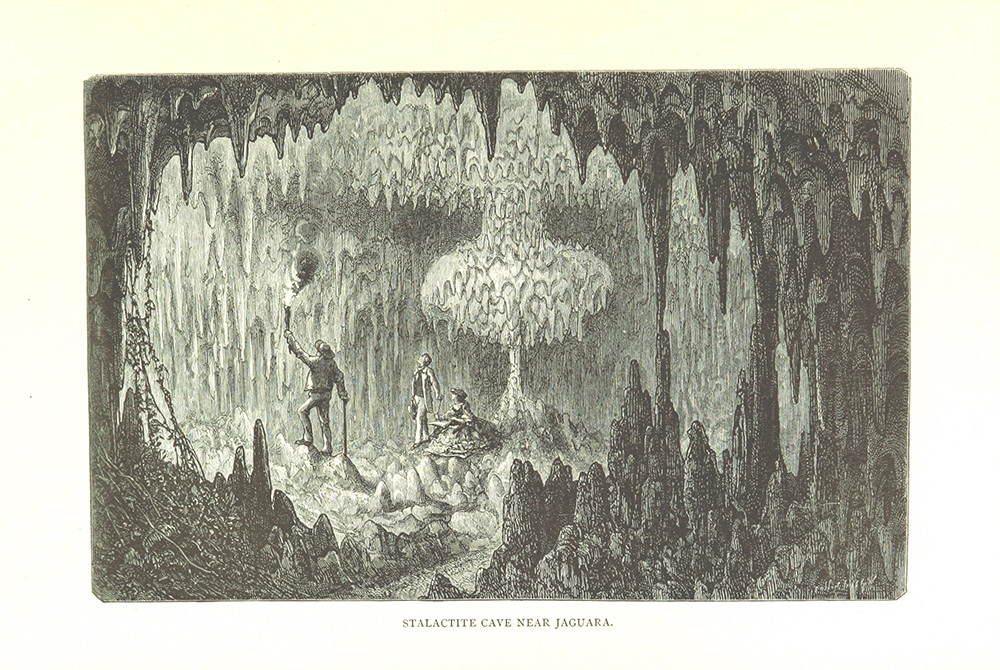
Spetsar öronen Tropical Nature, an account of the most remarkable phenomena of life in the Western Tropics. Compiled from the narratives of distinguished travellers and observers (1876)
On the interpellation of mountains
A hare appears in one of our dreams, reappears on our walks. It is hard to overlook the morphological analogues with stalagmites; groves of slowly accumulating ears where eyes will not do. Or the stalactites, taking a cue from cartoons, dripping attention from the direction of the sky, not vindicating the Aristotelians, but too fast for physics to keep up.
This particular chase, the inept hunter after the hare, mayflies in pursuit of continental shifts, has its own intersubjective dynamic. The hare looks over its tail, making sure it is followed. Then, luxuriously, taking all the time in the world, it raises itself to its full posture, announcing: I SEE YOU to the pursuer, the fox, the blink of an eye.
Ah, but you see, we never cared that much for minerals anyway. And we skulk off, preparing new stratagems.
(EB)
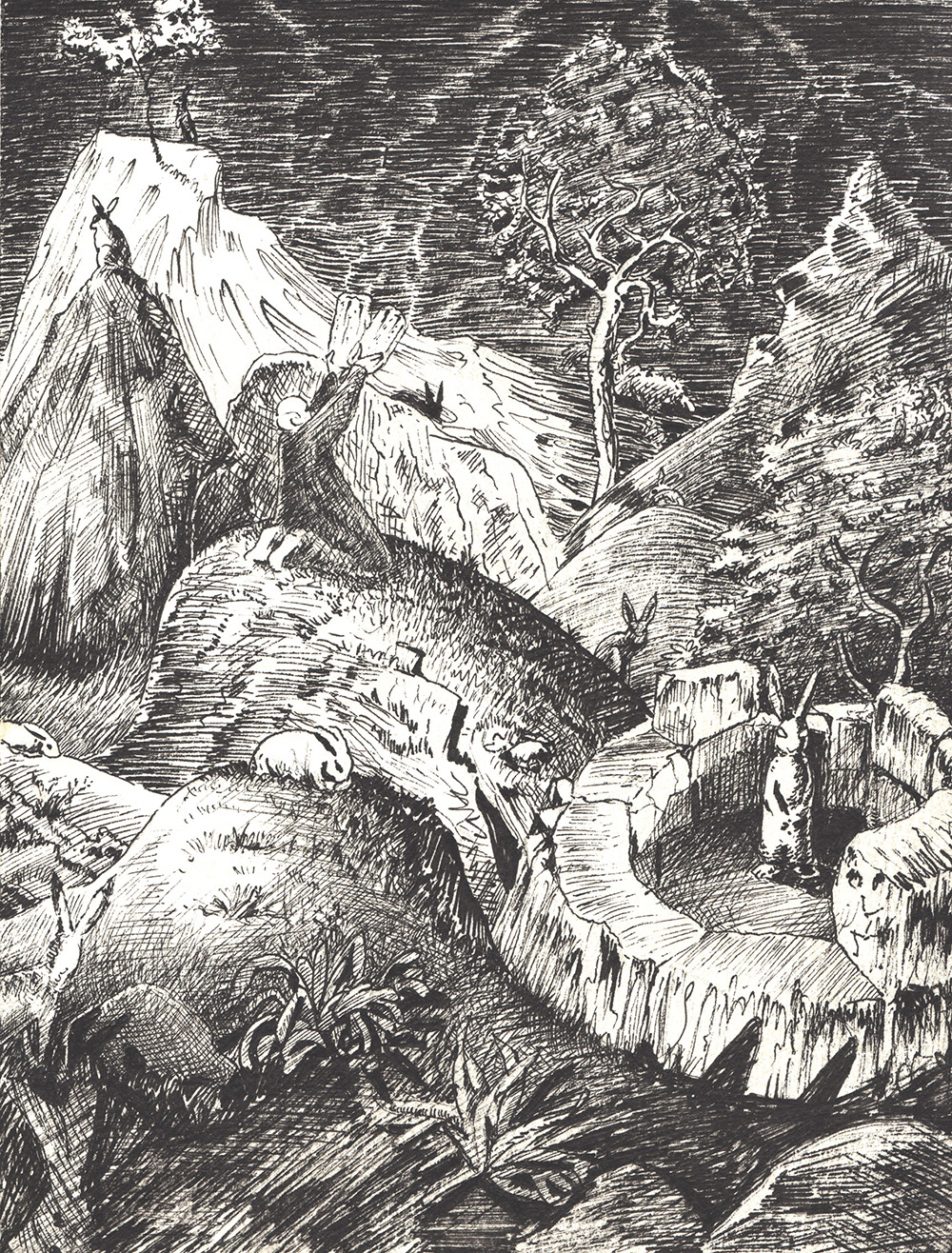
On the skin of their teeth
(NN)
The hare from Inaba
In Kojiki, the Japanese chronicle of ancient times, there is a tale of The White Hare of Inaba. In this tale Onamuchi no Kami (translated to the deity Great-Name-Possessor in Chamberlain’s translation of Kojiki) and his 80 brothers went to Inaba to ask to marry the Princess of Yakami in Inaba. Onamuchi no Kami was brought together as an attendant to carry their luggage.
On their way to Inaba at Cape Keta they came upon a skinned hare lying down. The eighty deities suggested that the hare should bathe in the seawater, and lie on the mountain exposed to the blowing wind. The hare did as the eighty deities suggested, and that caused it to weep in pain.
When Onamuchi approached the hare it told him that it had been on the Island of Oki and wanted to cross over to this land. He deceived the sharks (crocodiles in Chamberlain’s translation) to a competition of which of the tribes was larger in numbers, the hares or the sharks. And the hare made the sharks line up in the sea to build a bridge from Oki to Cape Keta. The hare walked on them while counting the sharks, when it was just about to get on land, and revealed its deception, the last shark seized it and stripped off all of his clothing.
Onamuchi told the hare to go quickly to the river mouth, wash your body with fresh water, and then roll about upon the pollen of the sedges. Whereupon its body was restored to its original state.
The hare of Inaba revealed itself as a Hare deity, and told Onamuchi that he would get married to princess Yakami.
Onamuchi later became enshrined in the Izumo Taisha shrine, the place where all the gods meet once a year and are absent from the other shrines. The hare of inaba is enshrined in the Hakuto shrine.
(RK)
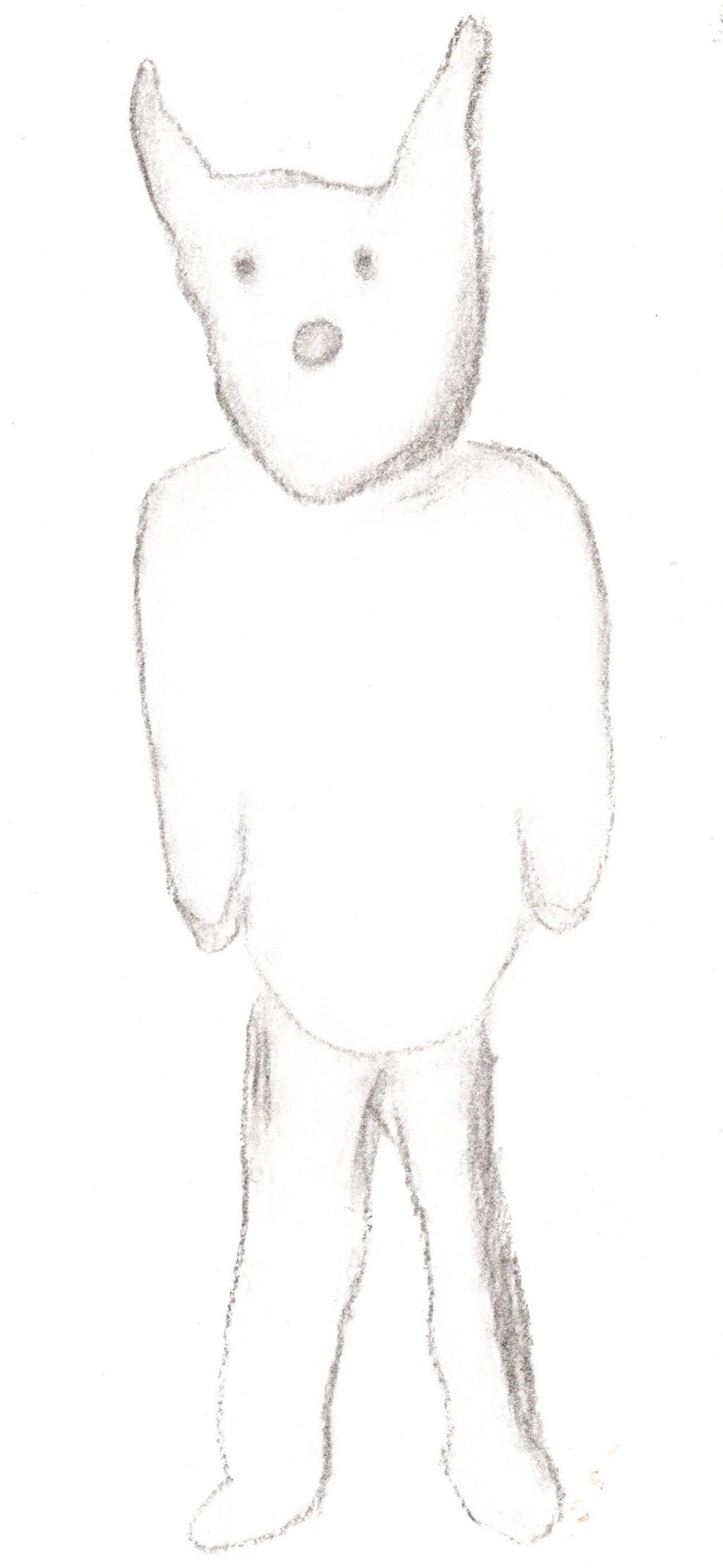
(ML)
Description of the primal scene
When the volcanic eruptions have stopped, the black raven sits on a big bumpy stone. Behind the stone, branches dense with leaves form an arc. It may not be an arc though; most likely it is a flat box, and when you open it you will find the pearl. That is, if you’re able to, before the snake swallows it. From behind, the raven appears to be headless, like a giant brain itself. Its feathers are made of fossils, dust and seashells, thinner than silk. Or at a second glimpse, it is hard as a beak before it turns into hundreds of black birds, swirling around, in a spiral, down over the rocky landscape – down toward the tree or the chimpanzee staring into the clear blue water. The tree made of ravens, a fir, is merely a blue piece in Ludo. A missile. A spatula. The milky way in an eye. The hands are still holding the fire.
(RK, EL, ML, KN AKS, synthesized by EL)
Mountain’s New Dress
There are mountains and then there are mountains. Or, at least, there are the different rhythms, styles or semblances in the life of minerals above a certain size. On the one hand, there are those mountains-in-themselves firmly placed on horizons, Elfland ridges untouched even by the last rays of the sun, beyond digging hands, falling climbers. If adorned with goats, one can be sure that they couldn’t possibly have got themselves to that particular ledge. The mountain as a whole, where spring floods leave no tracks: the pristine presence within eye-sight, always out of reach. And then there are the mountains that deign to engage with transients, the minerals-among-us. Those we attempt to divide and know according to a myriad schemas in human scale. These discrete entities (but not really; big rocks with proper roots, sure, but how deep, how high?) burrowed through with hidden pathways or impossible routes to a Shambhala or K’un-Lun: caught up in transference, turned into obstacles in someone else’s internal journey. And then there are the malleable Giants that move when we turn our attention elsewhere, transforming over the blink of an aeon: the mountain that sheds its skin like a snake, a trail of macadam fields and eskers, that hangs up its coat of glacier and lets it evaporate in the sun of the long spring. The mountain that litters the world with the signs of its failed careers and long-forgotten idées fixes. The Ur-Chrysalis that the organic mimics; the queen pupa, the Volcano: Familiar Gestalt, unchanging, a brittle form that boils within, and suddenly the as-yet-unformed cascading over fields and towns, darkening the skies with mineral modesty or subterfuge; a fountain; a horizontal high, the older sibling of historical, inorganic Nature browsing through shapes. Sure, deep time: but as subdividing, self-embracing, ever-boiling kernel.
(EB)
Dream seven years back
My friend and I live in a tipi on a mountaintop. My friend has very special abilities. She is tall and very confident. I somehow know her secret but would never reveal it, and she knows that. In this way, I’m her assistant, her second half. It makes me happy and a little nervous when the nurse comes to see us. We both need to go into the city to donate blood. We walk on an amazing road overlooking a mountain crevice. I am overwhelmed by all the colours that ripple across the mountains, layer upon layer, in places like waves in the ocean. It is incredibly beautiful. When we arrive we enter a huge room. Her mother stands in the middle of the room, in front of a guillotine. All her men stand in line, waiting for their turn at being beheaded. Suddenly the priest who is doing the killing explains that all the men are also the old woman’s sons, and I understand that my friend will be killed as well. She gets it too and has to do something to distract him. I have seen her do it before. She sinks down to split position and there is a huge light between her legs. The light transforms to a mouse that runs away. The priest becomes exalted and thinks she is a magical god, and everyone is saved. It is all thanks to the rainbow light of the mountain that she had brought with her.
(EL)
Dreaming the interior of rocks
“It is not knowledge of reality that makes us love reality passionately”, Gaston Bachelard writes in Water and Dreams.
I oppose the idea that the exact age of the rocks upon which we walk is significant for how we experience our surroundings. Is deep time not too deep and expansive for the human mind to grasp it in a quantitative way? Numbers are hardly that which makes us love the ground upon which we walk, and numbers are hardly that which provokes poetic conceptions of the stones, the rocks, and the mountains. The mountains’ ancient nature is poetically meaningful, but exact measurements of age pertain to different kinds of knowledge. The attempt below to sound out the meaning of the local rocks, cliffs, and mountains is inspired by Bachelard’s descriptions, in some of his books on the imagination of matter, of Robert Desoille’s therapeutic method, with which Desoille guided his patients to dream while awake about ascending to the atmosphere and descending into the earth. I lay down on the couch and attempted to make myself receptive to an ascent followed by a descent.
I turn into the wind and I leave my apartment through a window. I fly up into the air, less by my own volition and more by way of the dynamics of air, and look down at the courtyard. I fly down toward a rock jutting out of the grass. There’s a small crack in the rock, which I enter as wind. Inside the rock, I turn back into a human body, but my size is enigmatic to me. The interior of the rock is cramped and dark and rugged. I slither forward. I glimpse a light somewhere ahead. I slither toward the light. The narrow space widens. I gaze out at a high-ceilinged chamber inside the rock. The first thing I see is three petrified ravens, each sitting on a high throne of stone. The raven in the middle has a crown on his head, the left-hand raven has diamonds for eyes, and the right-hand raven has rubies for eyes. Several fires burn next to the ravens’ thrones. Water is dripping from the ceiling. In front of the fire, there’s an enormous sleeping cow, whose heavy breathing makes the entire room vibrate.
The ravens are alchemical symbols of nigredo. Their petrification suggests that the alchemical process has been halted. But the fact that the ravens are equipped with symbols of albedo, rubedo, and the Philosopher’s Stone indicates that there is a potential here for the process to be resumed. The four elements are all present: earth is where the room is located, fires burn by the thrones, water is dripping from the ceiling, and the air that the cow exhales will possibly aid the ravens in lifting their wings and breaking their spell of petrification, allowing the alchemical process to come alive once more. The cow may be Audhumbla, the ancient cow that, according to Nordic mythology, was born from drops of melting white frost and who then aided in the creation of the world. She is an ancient mother, much like the cows that proliferate across many myths in different parts of the world. Audhumbla’s appearance in this cavernous room is less a reminder of a repressed cultural heritage than a promise that the descent into the underworld and the state of nigredo will be followed with renewal. We walk not only on deep history, but on a dormant potential for change, the seed of which is the organic and inorganic worlds’ secrets when explored with intuition and imagination.
(KN)
Through an experiment in telepathy, we set out to create collective impressions of the interior of the rocks and mountains. Directly after the telepathy session, we each drew what we had seen.
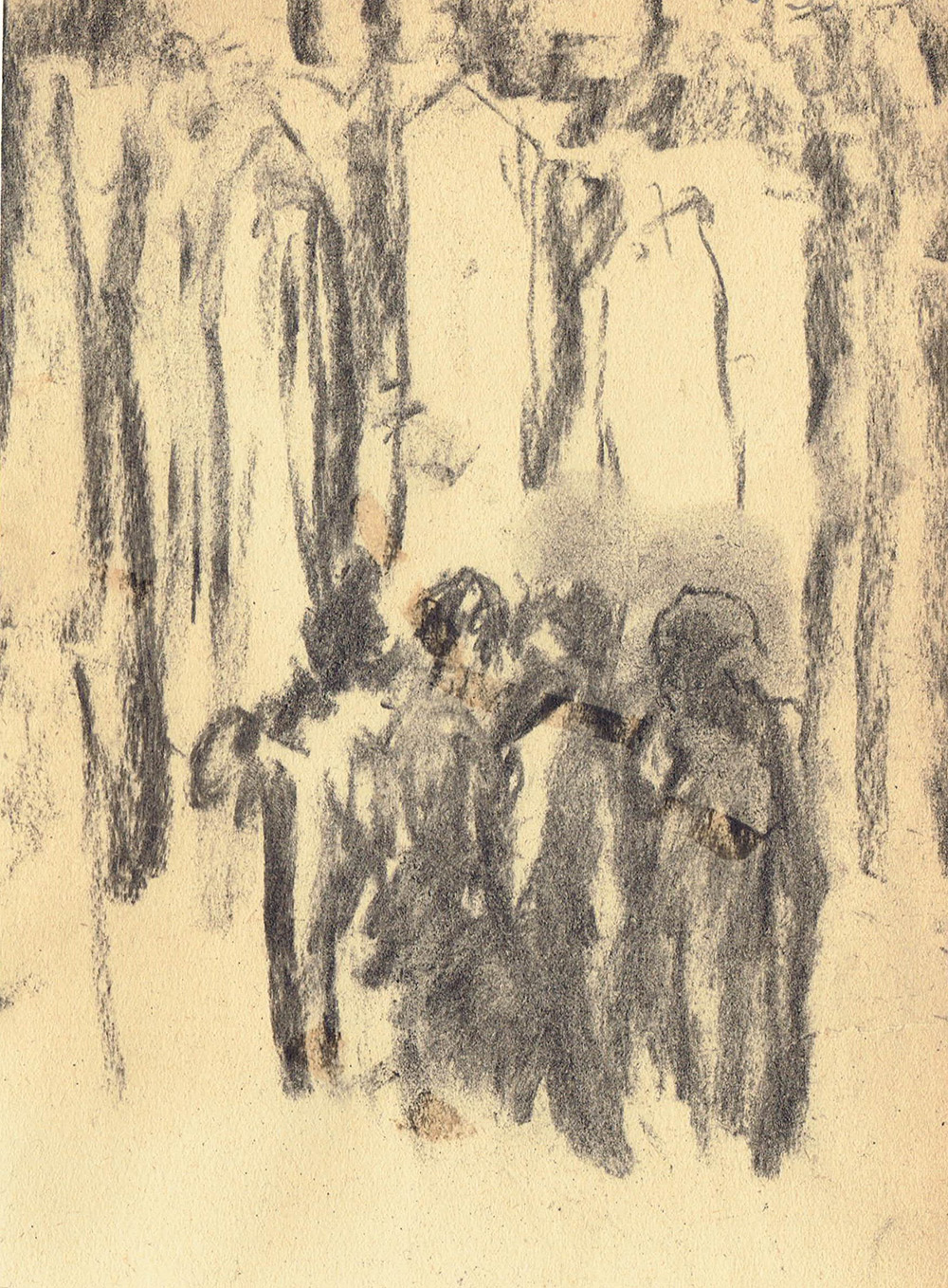
Samling i den stora bergsalen. Gathering in the large rockhall. 山大本堂の集まり (yamadaihondou no atsumari). Kokoelma isossa vuorensalissa.
(RK)
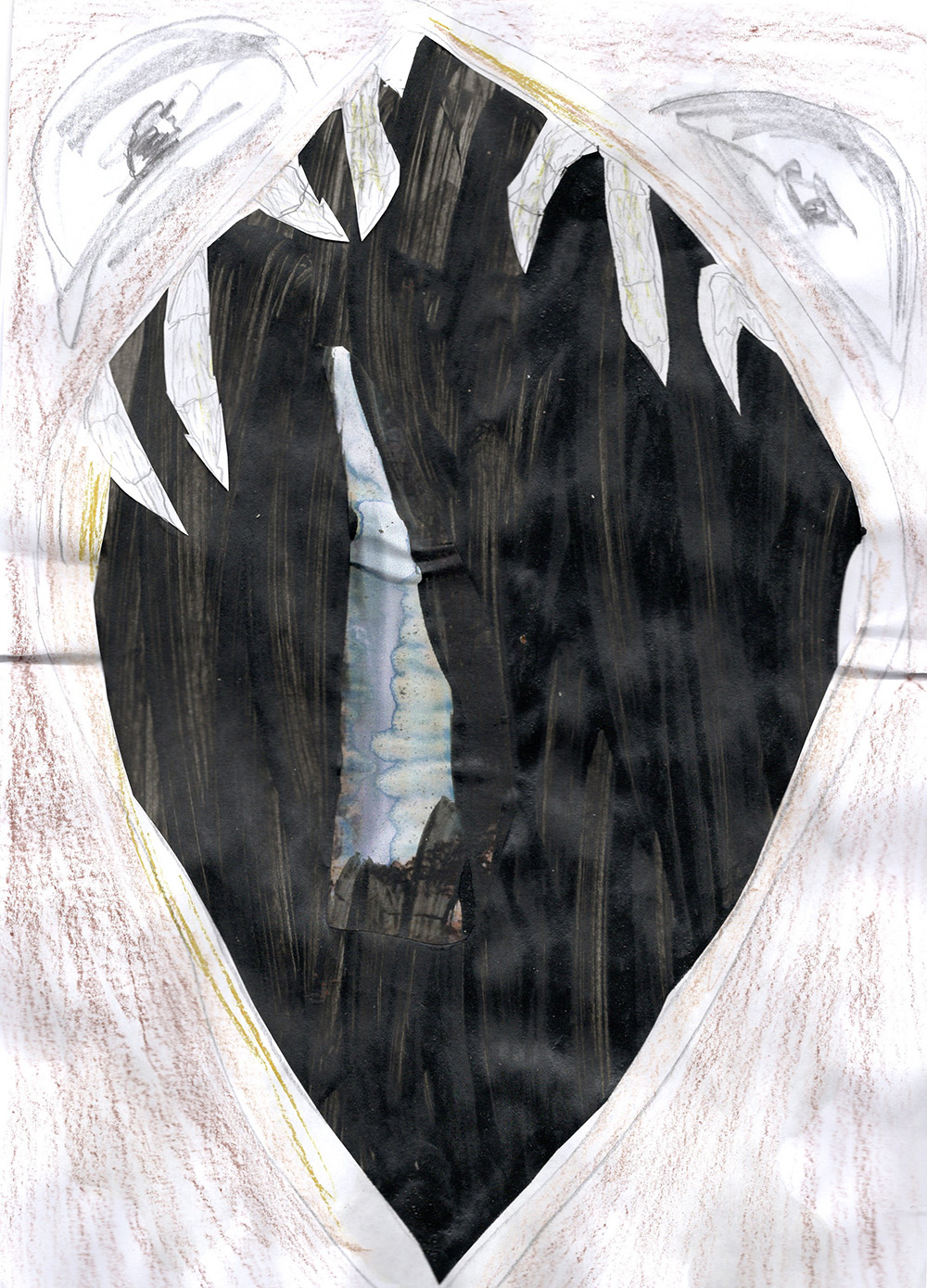
Down through a mountain cleft in the forest, through a bird’s beak, to a room where a spider’s legs were floundering from the ceiling.
(EL)
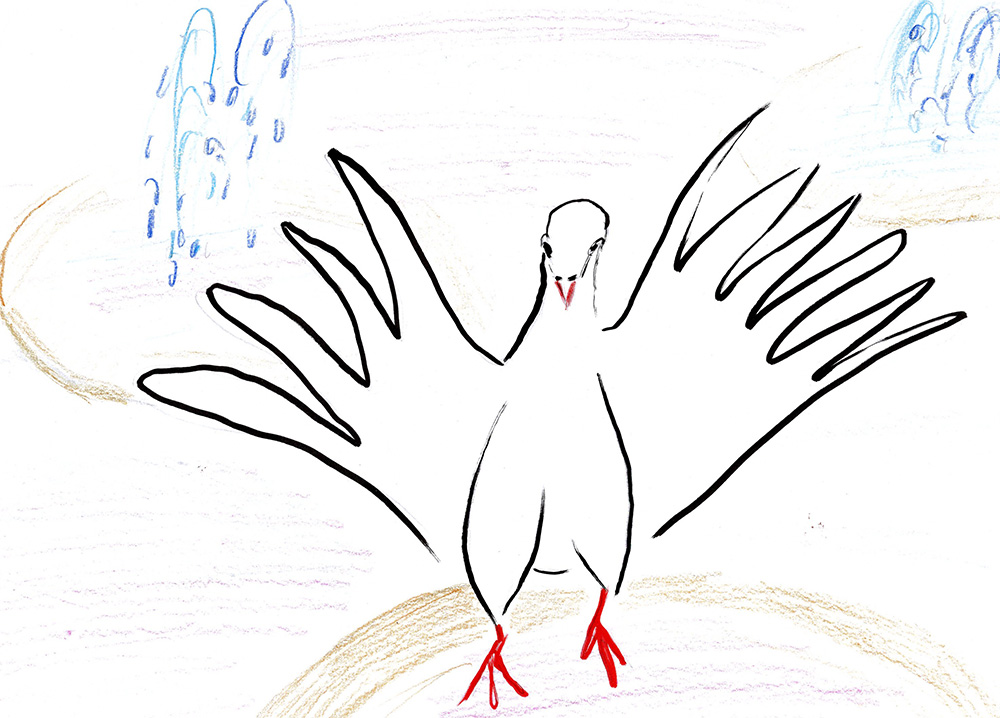
Amethyst mine
(EL)
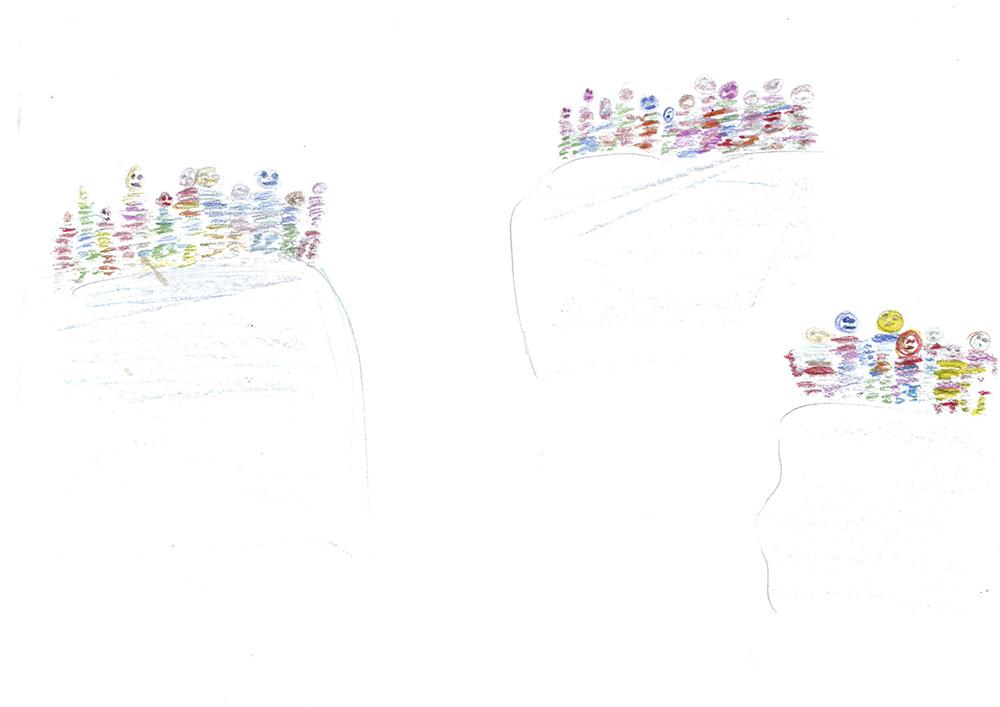
Well known mountain
(EL)
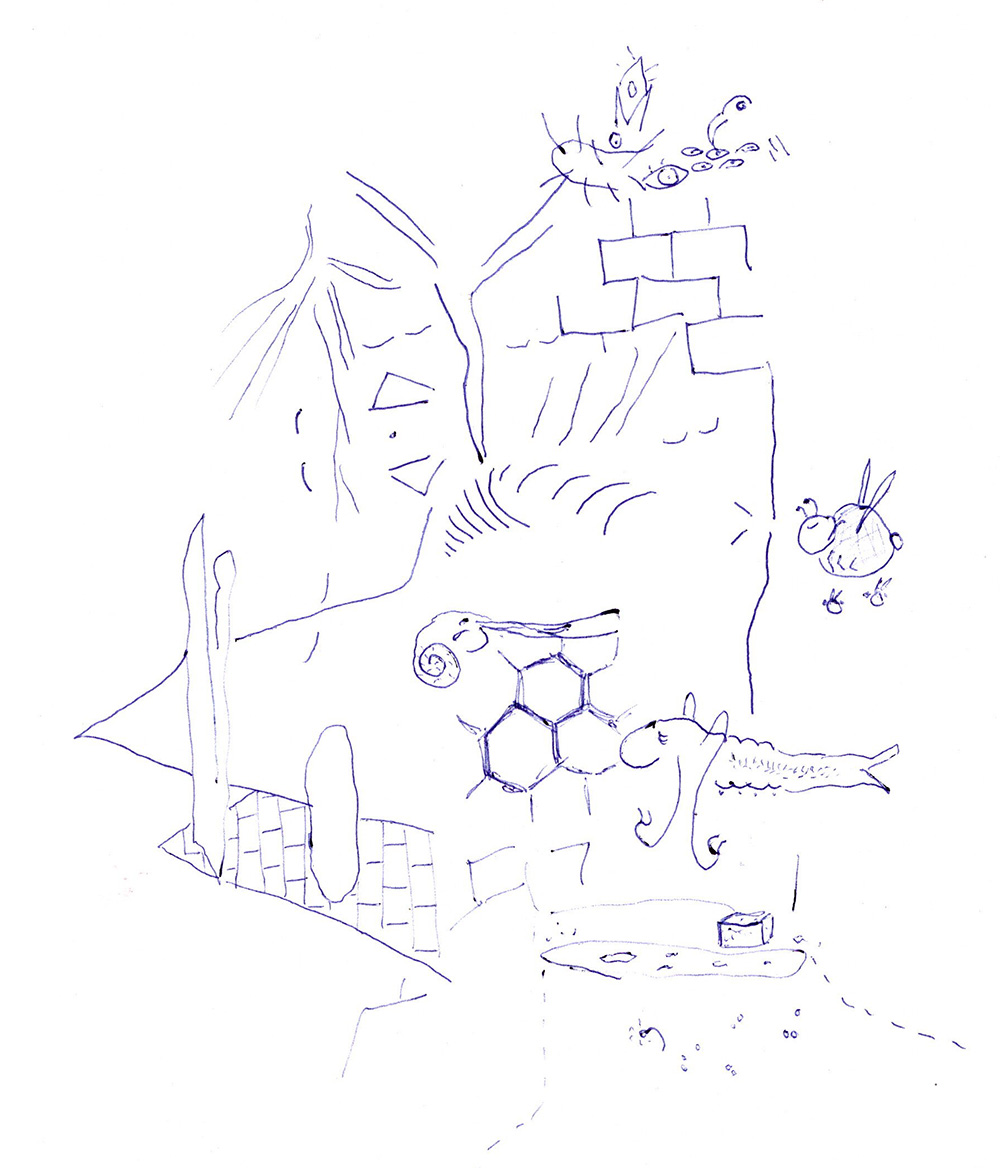
I allowed my pen to move where it wanted, and whenever images turned up I tried to draw them as best as I could.
(EB)
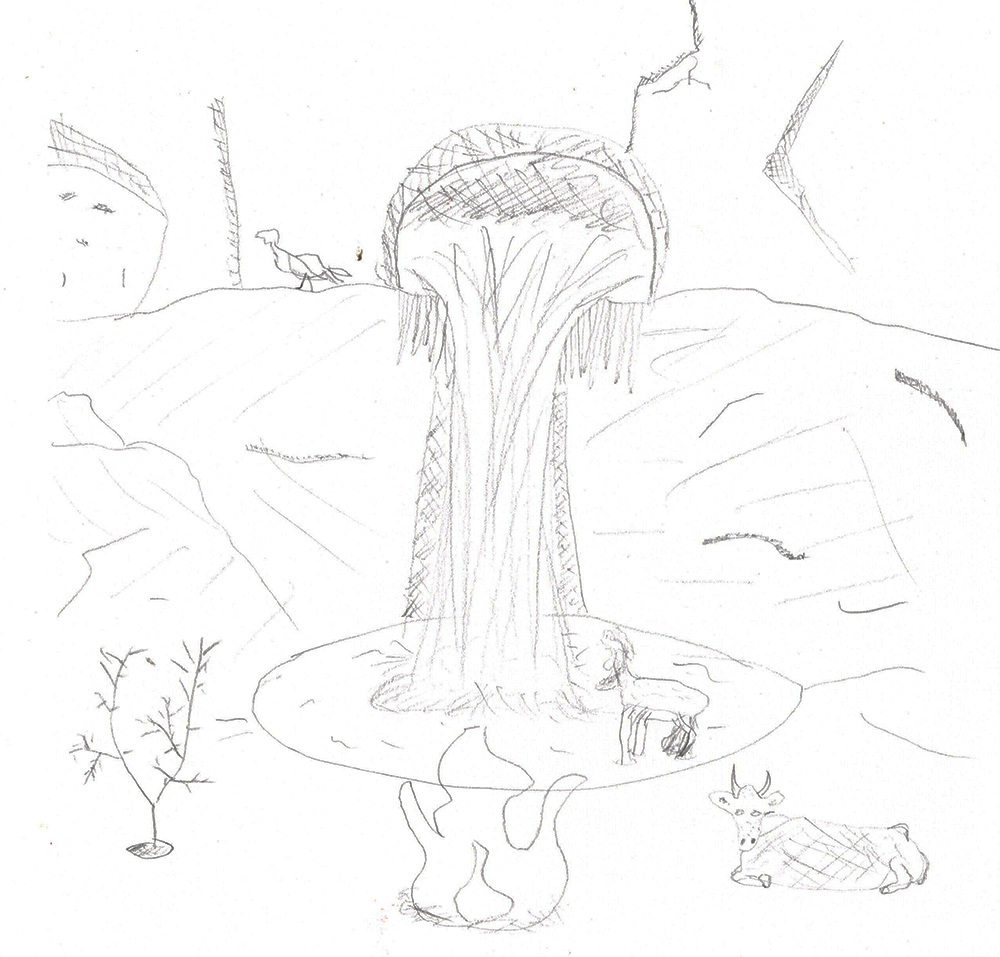
The fire and the cow showed up inside the mountain once more.
(KN)
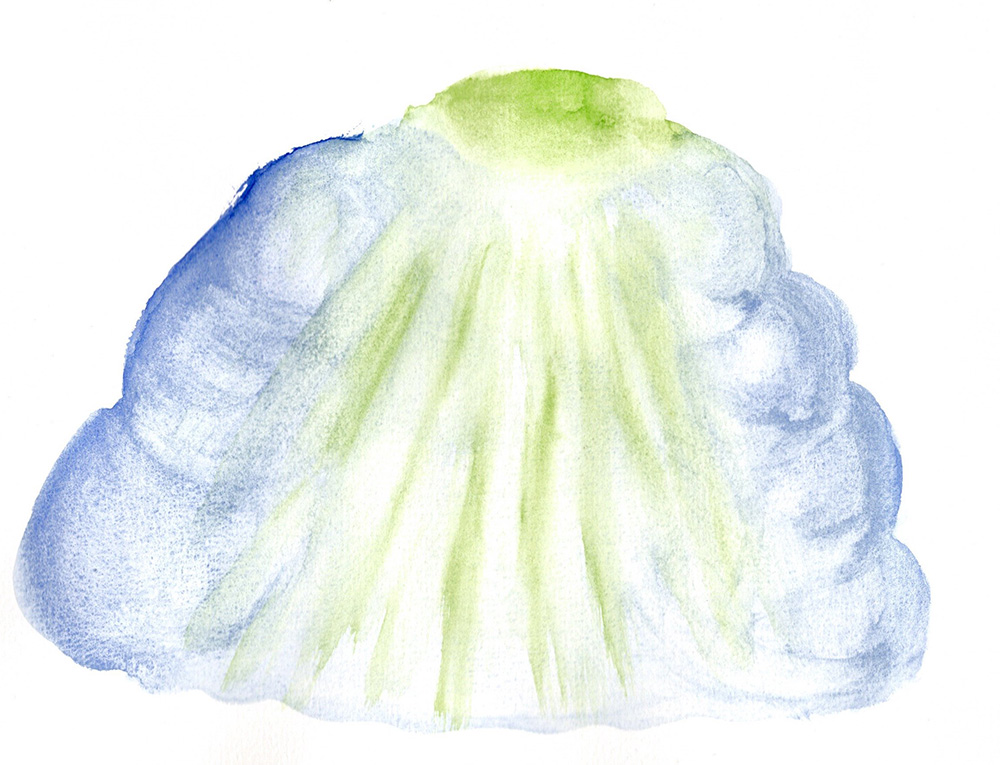
In the grotto, surprised by emerald light
(ML)
An excursion in the Lill-Jan forest
We set out to explore the forest in search of the fossils mentioned in several questions in the enquiry. Starting out underneath the trees next to the Royal Institute of Technology, we enter the Lill-Jan forest by turning right next to the Hare Pavilion, where the group often meets in the summer. Before entering the woods, still mostly bare due to the unusually chilly spring, we engage in a ritual by reading an automatic poem.
swallow the stick and lose yourself in the forest
let the rain pour down on you
bend down and stick one of your toes in your mouth
turn yourself into an O and roll over the pine needles
drop the thistles over the twigs and
shake to the rhythm of the pounding drops
finally, with both feet in your mouth, make sure to find a stone
take the stone in your left hand and hit it against a tree trunk
the hole that opens is the future
the cave in which you were born
and where the new time rests, a seed
the feet in your mouth prevent you from swallowing the seed
be your own Athanor
let your nails melt into mucus black as raven
let your skin flakes tint the mucus
keep on rolling
and stimulate the process by imbibing three drops of rain water every fifteen minutes
give birth to a tree
become the tree
become the hole
take a curling iron and shape your crown into locks of hair
deadly beautiful and pregnant with future
(KN)
By following the instructions in the poem, we find our way to a tree that creates living fossils.

Next to the tree we find a horse’s head that the tree has ejected.

There is a large patch on the tree where the bark has been peeled off and a slit has opened, slithering in shape. On the ground in front of this patch and the slit there is a long tree trunk, which has partially decomposed; the bark that has fallen off exposes a construction that looks like a wide set of stairs, as well as the blood of the earth in dried, powdery form, its orange hue resembling the colour on the underside of the lid to a well we examined earlier. On top of the fallen tree lies a stone of the exact right size for one of the actions the automatic poem dictates that we ought to perform. At the foot of the tree that is still standing there is also a sanitary pad. The tree has grown a nose and the head of a wild boar, both jutting out from the trunk; higher up, something that looks like the feathers of a baby bird are either moving of their own volition or else they are ruffled by the wind. Above them, a bull leans down toward us with a threatening appearance, wide menacing eyes, and the arm of a human baby. Behind the bull the tree trunk again assumes a more conventional shape.
In order to explore the tree further, the instructions in the poem tell us to imbibe three drops of water. We wait patiently for the rain. Before long, the wind increases in strength and a light rain provides us with the drops we need, before it almost instantly ceases. We try to learn more about the mysteries of the tree by rolling our bodies in its direction, as the poem tells us to, and hit it with a rock. However, we soon realize that rather than cracking the bark, what we are really looking for is not so much new holes as already present keyholes. We examine these keyholes by pressing sheets of paper against them and rubbing them. The frottages, made with sand and lipstick, appear to show us new forms attempting to emerge from matter. Before leaving the tree, we take a final look at its living fossils. In that moment, a goldcrest settles on the trunk and starts leaping across it with swift movements resembling those of a swimming fish.
Alternative names by RK:
1. The Clown and the Dragon by Miyamoto Musashi.
2. Penis Medusa Head Joke Drawing by Robert Crumb
3. Jesus’ Death Mask beta version by Unknown
4. Saint George and the Dragon and the Snake and Saint George The Slayer, woodcut by Åke Holm
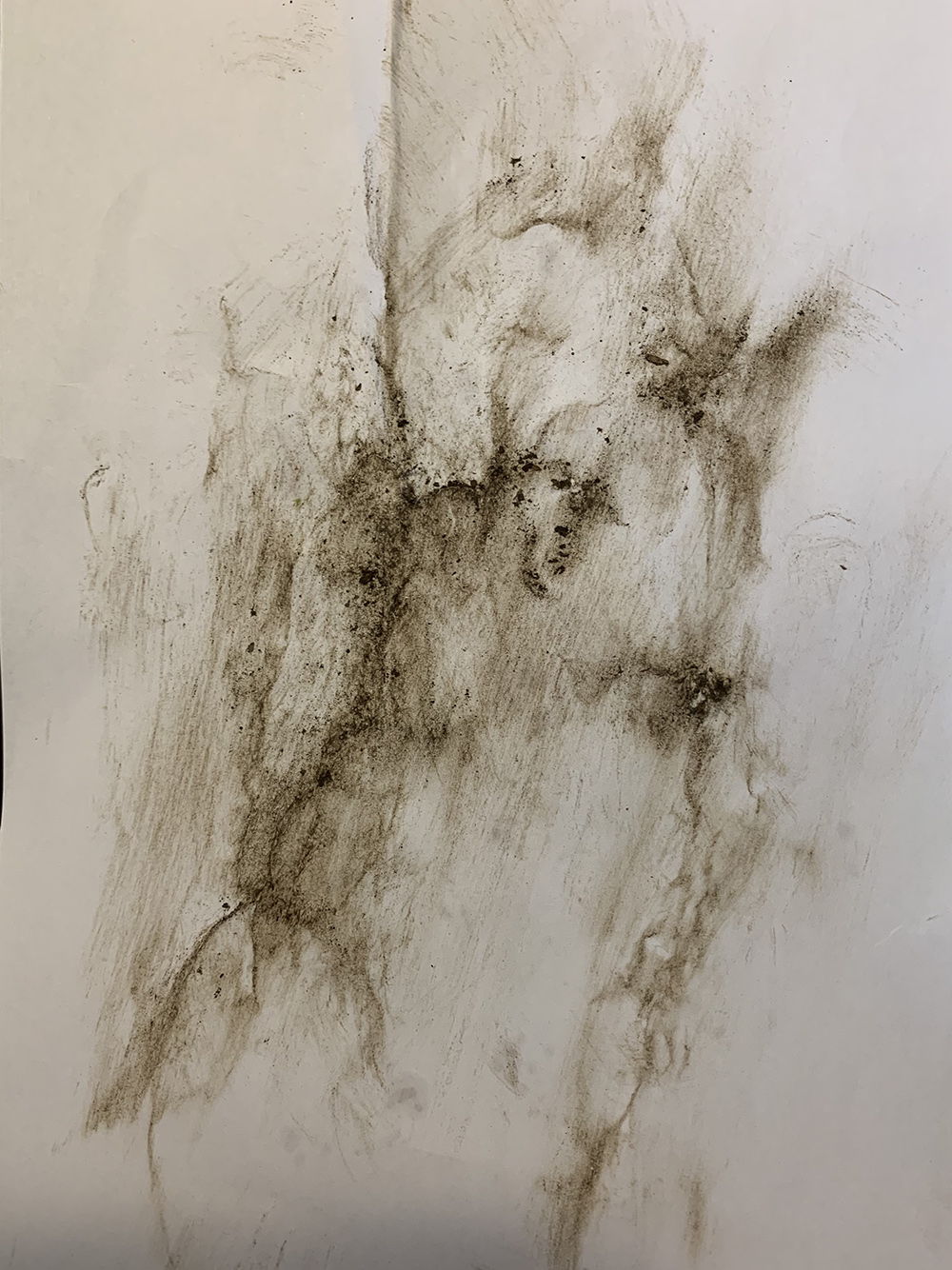
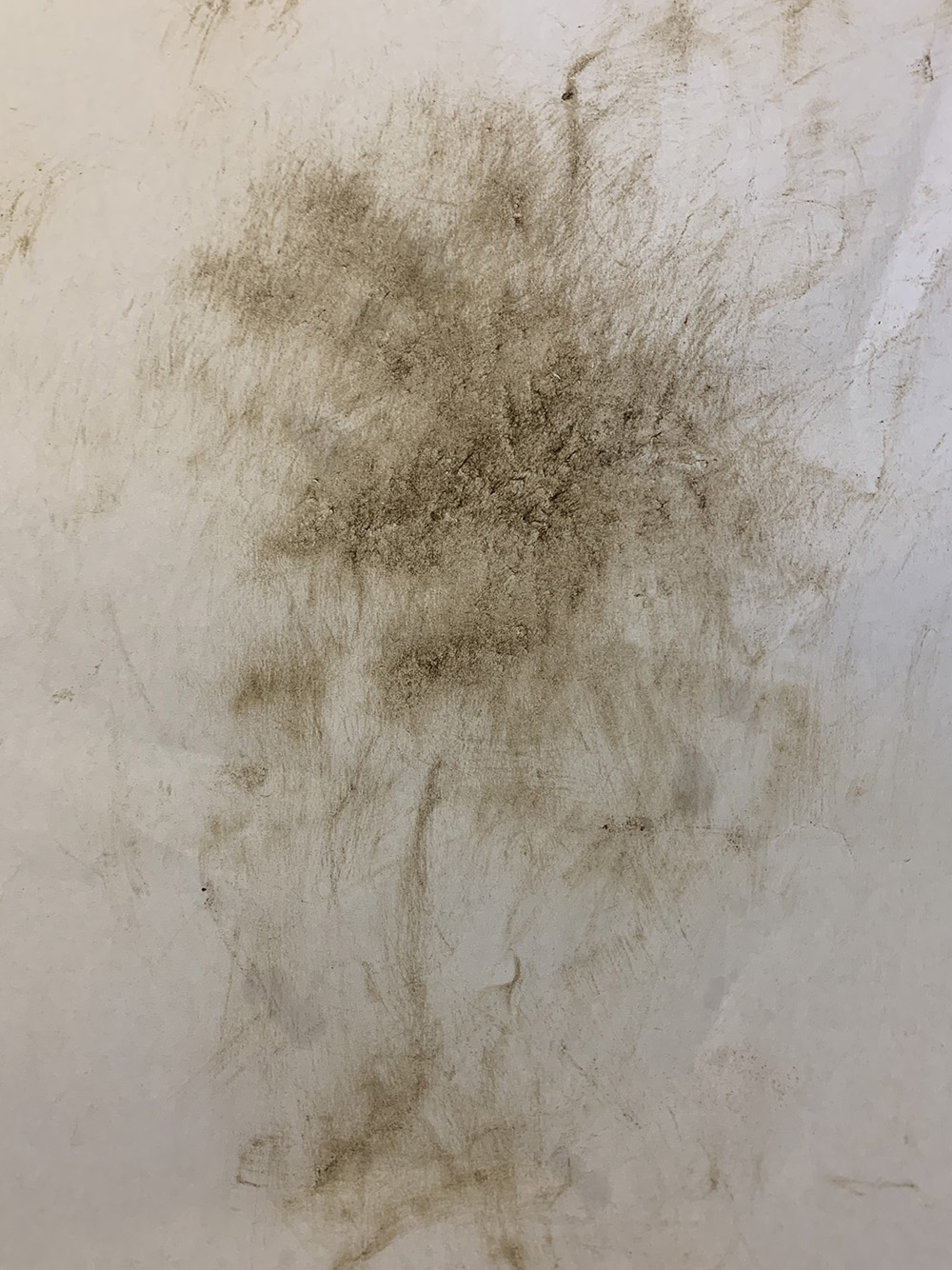
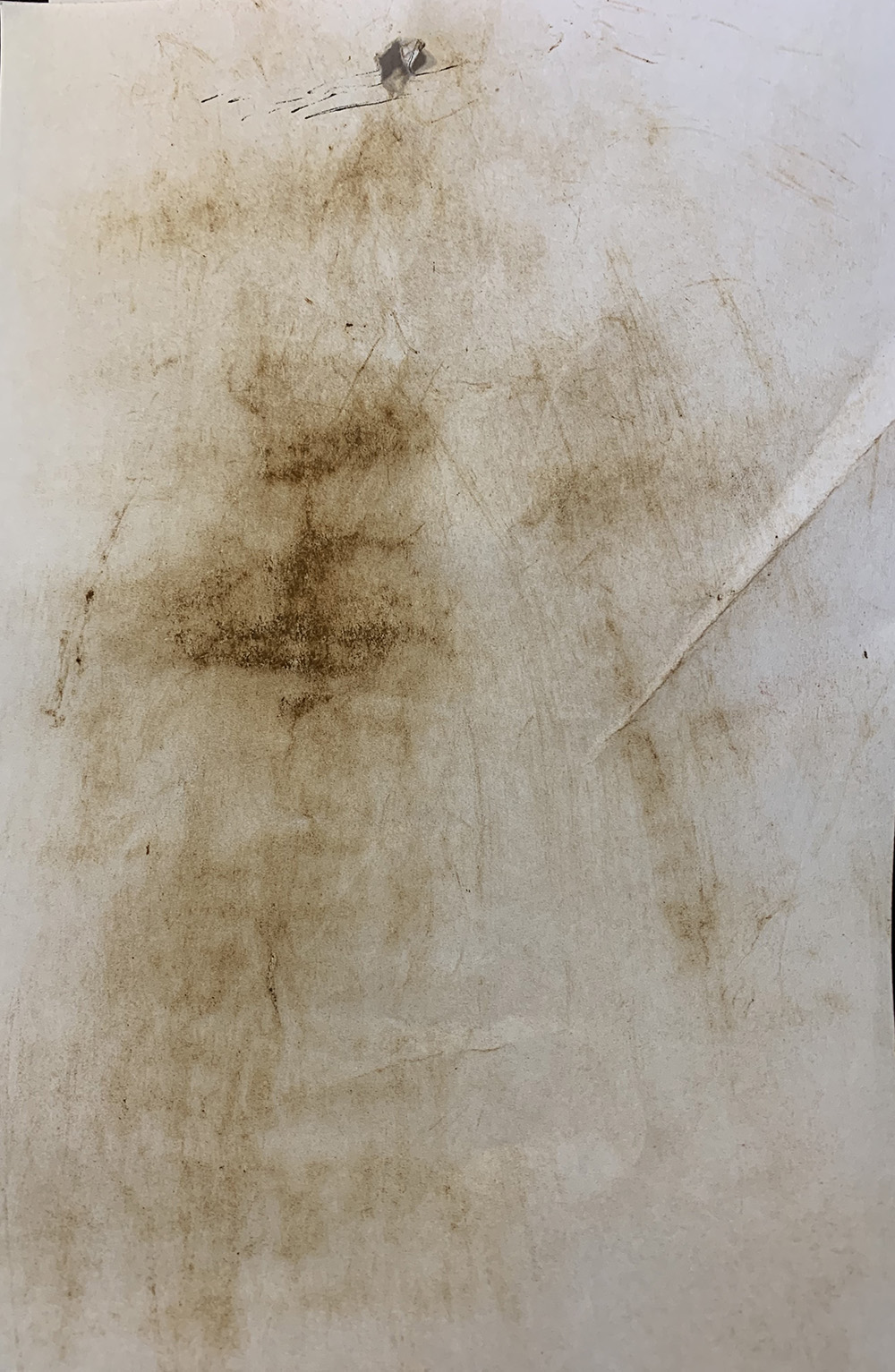
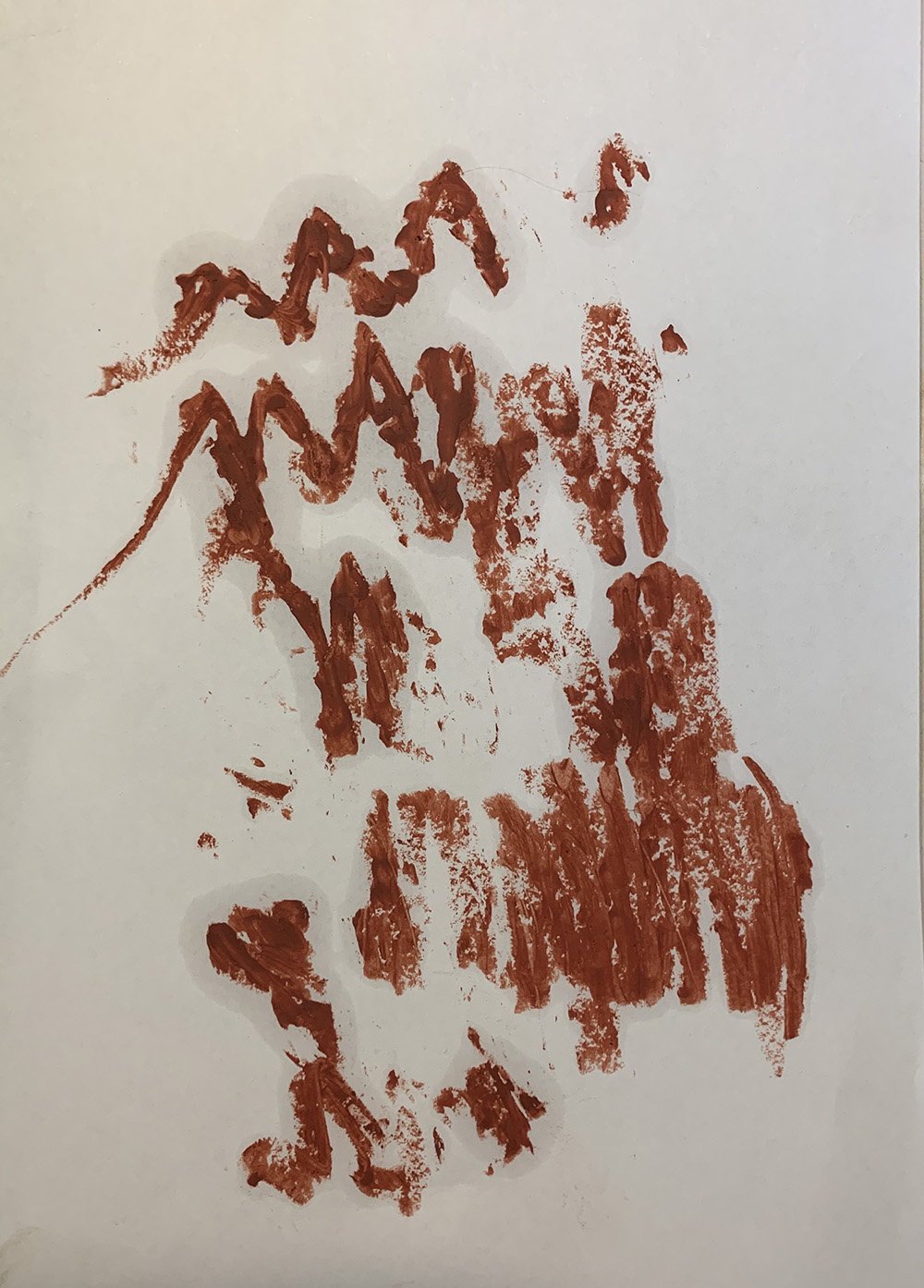
Two things recur several times, both before we enter the forest and once we are in it: shredded edges of flowers and plants, and fractal-looking patterns on both the horse’s head and on the tree, like fingers dividing into more fingers dividing into more fingers.
We repeatedly encounter woodlice and talk about the way in which some of them roll themselves into balls, while others do not. Is there an evolutionary purpose to this behaviour, or is it simply a result of genetic variation?
Time and time again, the border between the vegetable, animal, and mineral kingdoms prove to be arbitrary. Erik tells us about how the zodiac in the county Blekinge in the south of Sweden comprises both trees and animals.
Emerging from the forest, we realize that we find the idea behind the Deep Time enquiry more interesting than the actual questions. While we did find the fossil-producing tree, we also realize that question no. 7 is solely concerned with human-made artefacts of a kind of which we found no examples in the forest. The questions harbour an anthropocentrism that diverges from both the notion of deep time and the framing of the enquiry. This is the moment we understand that our response will be an exploration of themes and topoi, rather than a straightforward answer to the questions in the enquiry.
(EB, EL, KN)
At the same time, in another part of the woods:
There is a tangle of roots by the stream, the base of a fallen tree, and a funny little pale stone with something embedded in it: it’s the scale of a perch – no, it’s a cockle, partly covered in sandstone. In many other places that would be no peculiar thing, but in this area, with its granite, ice age moraines and clay deposits, you rarely find objects like it.
Where the stone encounters a patch of blemished lichen on an old grey alder trunk (featuring a deserted great spotted woodpecker nest, the wound left by a fallen branch, and tinder polypore fruiting bodies), the bark yields somewhat. The crack reveals a tight darkness with the air of being inhabited. It gives off a fresh smell, like damp soil. Both insides shimmer faintly in the gloom.
(IÖ)
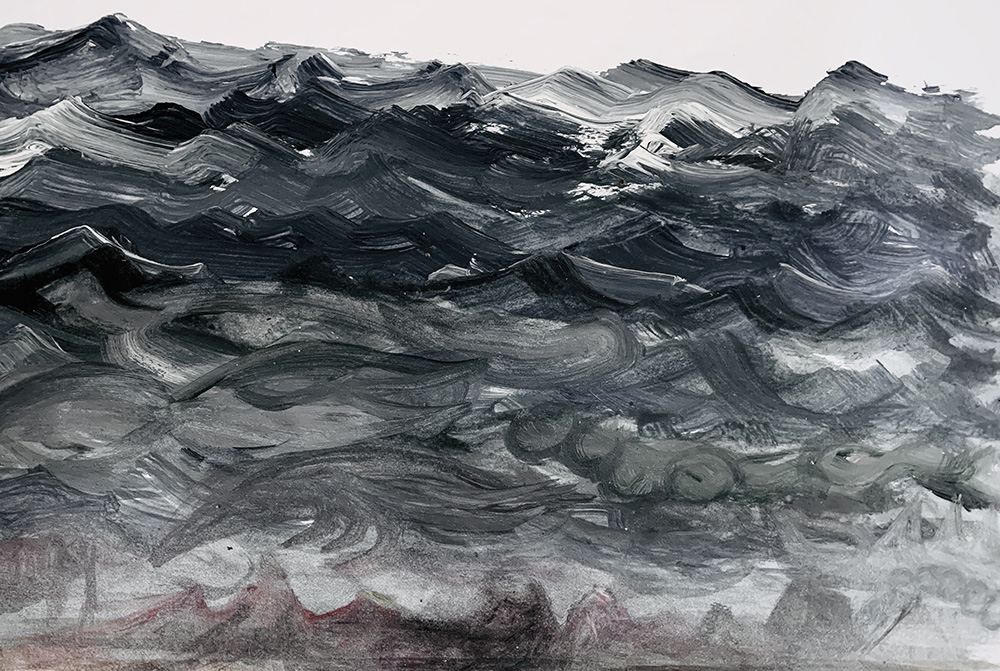
Dream of extinct life forms
The floor curled by the
impatient sea monsters as
they made their way through
the holes in the ground
Jumping over bodies
where we slept unconcerned
and the floor rose and burst
when they met down below
The serpent biting the dragon’s throat
in the corner of my eye
and we knew it was time
That we would meet on the beach
Escape every house
and watch the sun soak the seashore
(EL)
Dawn
But this morning: a dream of rocks and pillar mountains, striped in black and white, drawn by two persons of different tempers. A third person appeared, pulling a wheeled bag filled with assorted light bulbs, then began demonstrating their use: to find something out, you illuminate the mountains.
(IÖ)
Erik Bohman, Riyota Kasamatsu, Emma Lundenmark, Maja Lundgren, Niklas Nenzén, Kristoffer Noheden, Sebastian Osorio, Anna-Karin Selberg, Ika Österblad
